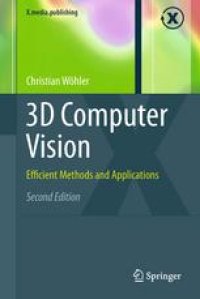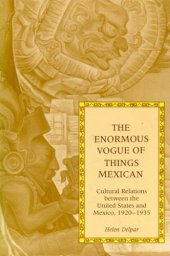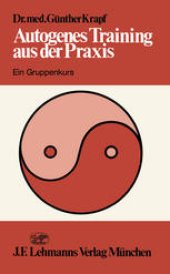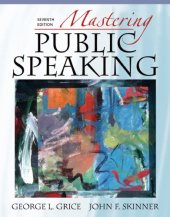
Ebook: 3D Computer Vision: Efficient Methods and Applications
Author: Christian Wöhler (auth.)
- Tags: Computer Imaging Vision Pattern Recognition and Graphics, Computer Graphics, Image Processing and Computer Vision, Pattern Recognition, Media Design, Artificial Intelligence (incl. Robotics)
- Series: X.media.publishing
- Year: 2013
- Publisher: Springer-Verlag London
- Edition: 2
- Language: English
- pdf
This indispensable text introduces the foundations of three-dimensional computer vision and describes recent contributions to the field. Fully revised and updated, this much-anticipated new edition reviews a range of triangulation-based methods, including linear and bundle adjustment based approaches to scene reconstruction and camera calibration, stereo vision, point cloud segmentation, and pose estimation of rigid, articulated, and flexible objects. Also covered are intensity-based techniques that evaluate the pixel grey values in the image to infer three-dimensional scene structure, and point spread function based approaches that exploit the effect of the optical system. The text shows how methods which integrate these concepts are able to increase reconstruction accuracy and robustness, describing applications in industrial quality inspection and metrology, human-robot interaction, and remote sensing.
This indispensable text introduces the foundations of three-dimensional computer vision and describes recent contributions to the field.
Fully revised and updated, this much-anticipated new edition reviews a range of triangulation-based methods, including linear and bundle adjustment based approaches to scene reconstruction and camera calibration, stereo vision, point cloud segmentation, and pose estimation of rigid, articulated, and flexible objects. Also covered are intensity-based techniques that evaluate the pixel grey values in the image to infer three-dimensional scene structure, and point spread function based approaches that exploit the effect of the optical system. The text shows how methods which integrate these concepts are able to increase reconstruction accuracy and robustness, describing applications in industrial quality inspection and metrology, human-robot interaction, and remote sensing.
Practitioners of computer vision, photogrammetry, optical metrology, robotics and planetary science will find the book an essential reference.
Key Topics
- Examines three-dimensional surface reconstruction of strongly non-Lambertian surfaces by the combination of photometric stereo and active range scanning, with applications to industrial metrology (NEW)
- Discusses pose estimation and tracking of human body parts, and subsequent recognition of actions performed in a complex industrial production environment, in the context of safe interaction between humans and industrial robots (NEW)
- Reviews the construction of high-resolution lunar digital elevation models based on orbital imagery in combination with laser altimetry data, including a discussion of the latest lunar spacecraft data sets (NEW)
This indispensable text introduces the foundations of three-dimensional computer vision and describes recent contributions to the field.
Fully revised and updated, this much-anticipated new edition reviews a range of triangulation-based methods, including linear and bundle adjustment based approaches to scene reconstruction and camera calibration, stereo vision, point cloud segmentation, and pose estimation of rigid, articulated, and flexible objects. Also covered are intensity-based techniques that evaluate the pixel grey values in the image to infer three-dimensional scene structure, and point spread function based approaches that exploit the effect of the optical system. The text shows how methods which integrate these concepts are able to increase reconstruction accuracy and robustness, describing applications in industrial quality inspection and metrology, human-robot interaction, and remote sensing.
Practitioners of computer vision, photogrammetry, optical metrology, robotics and planetary science will find the book an essential reference.
Key Topics
- Examines three-dimensional surface reconstruction of strongly non-Lambertian surfaces by the combination of photometric stereo and active range scanning, with applications to industrial metrology (NEW)
- Discusses pose estimation and tracking of human body parts, and subsequent recognition of actions performed in a complex industrial production environment, in the context of safe interaction between humans and industrial robots (NEW)
- Reviews the construction of high-resolution lunar digital elevation models based on orbital imagery in combination with laser altimetry data, including a discussion of the latest lunar spacecraft data sets (NEW)
Content:
Front Matter....Pages I-XVII
Front Matter....Pages 1-1
Triangulation-Based Approaches to Three-Dimensional Scene Reconstruction....Pages 3-87
Three-Dimensional Pose Estimation and Segmentation Methods....Pages 89-137
Intensity-Based and Polarisation-Based Approaches to Three-Dimensional Scene Reconstruction....Pages 139-170
Point Spread Function-Based Approaches to Three-Dimensional Scene Reconstruction....Pages 171-187
Integrated Frameworks for Three-Dimensional Scene Reconstruction....Pages 189-244
Front Matter....Pages 245-245
Applications to Industrial Quality Inspection....Pages 247-280
Applications to Safe Human–Robot Interaction....Pages 281-310
Applications to Lunar Remote Sensing....Pages 311-355
Conclusion....Pages 357-362
Back Matter....Pages 363-381
This indispensable text introduces the foundations of three-dimensional computer vision and describes recent contributions to the field.
Fully revised and updated, this much-anticipated new edition reviews a range of triangulation-based methods, including linear and bundle adjustment based approaches to scene reconstruction and camera calibration, stereo vision, point cloud segmentation, and pose estimation of rigid, articulated, and flexible objects. Also covered are intensity-based techniques that evaluate the pixel grey values in the image to infer three-dimensional scene structure, and point spread function based approaches that exploit the effect of the optical system. The text shows how methods which integrate these concepts are able to increase reconstruction accuracy and robustness, describing applications in industrial quality inspection and metrology, human-robot interaction, and remote sensing.
Practitioners of computer vision, photogrammetry, optical metrology, robotics and planetary science will find the book an essential reference.
Key Topics
- Examines three-dimensional surface reconstruction of strongly non-Lambertian surfaces by the combination of photometric stereo and active range scanning, with applications to industrial metrology (NEW)
- Discusses pose estimation and tracking of human body parts, and subsequent recognition of actions performed in a complex industrial production environment, in the context of safe interaction between humans and industrial robots (NEW)
- Reviews the construction of high-resolution lunar digital elevation models based on orbital imagery in combination with laser altimetry data, including a discussion of the latest lunar spacecraft data sets (NEW)
Content:
Front Matter....Pages I-XVII
Front Matter....Pages 1-1
Triangulation-Based Approaches to Three-Dimensional Scene Reconstruction....Pages 3-87
Three-Dimensional Pose Estimation and Segmentation Methods....Pages 89-137
Intensity-Based and Polarisation-Based Approaches to Three-Dimensional Scene Reconstruction....Pages 139-170
Point Spread Function-Based Approaches to Three-Dimensional Scene Reconstruction....Pages 171-187
Integrated Frameworks for Three-Dimensional Scene Reconstruction....Pages 189-244
Front Matter....Pages 245-245
Applications to Industrial Quality Inspection....Pages 247-280
Applications to Safe Human–Robot Interaction....Pages 281-310
Applications to Lunar Remote Sensing....Pages 311-355
Conclusion....Pages 357-362
Back Matter....Pages 363-381
....


















